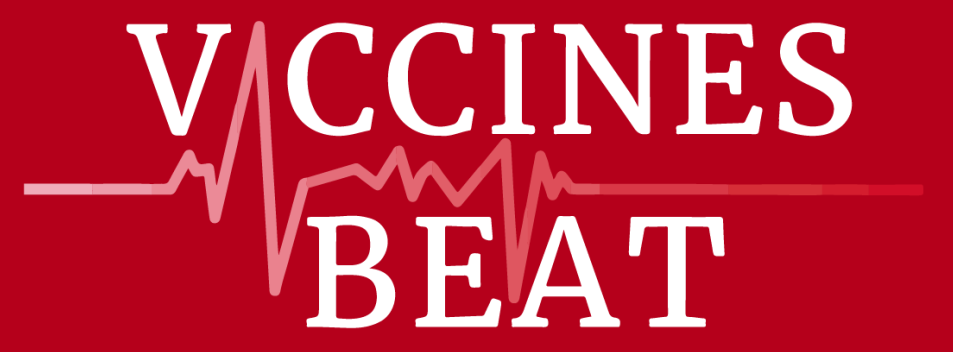Authors:
Enrique Chacon-Cruz, M.D., MSc
Felicitas Colombo, MPA
Dr. Rajeev Venkayya is a recognized global health leader with deep expertise in vaccines, pandemic preparedness, and biopharmaceutical innovation. He currently serves as a venture advisor and holds board positions with the and the Coalition for Epidemic Preparedness Innovations (CEPI), the International AIDS Vaccine Initiative (IAVI), and Global Health Innovative Technology Fund (GHIT).
Most recently, Dr. Venkayya was the CEO of Aerium Therapeutics, a biotechnology company focused on developing next-generation antibody therapies. Prior to that, he served as President of the Global Vaccine Business Unit at Takeda Pharmaceuticals, where he led a fully integrated organization spanning research and development, manufacturing, and commercialization. Under his leadership, Takeda advanced several key vaccine candidates targeting dengue, norovirus, and Zika (with support from the U.S. government), as well as a Sabin-strain inactivated polio vaccine funded by the Bill & Melinda Gates Foundation. Takeda’s dengue vaccine is now licensed and distributed in dengue-endemic countries around the world.
Earlier in his career, Dr. Venkayya served as Director of Vaccine Delivery at the Gates Foundation, where he oversaw global initiatives such as polio eradication and the introduction of new vaccines. He also served on the board of the Global Alliance for Vaccines and Immunization (Gavi) during this time.
In the public sector, Dr. Venkayya was appointed Special Assistant to the President and Senior Director for Biodefense at the White House, where he led the development and implementation of the U.S. National Strategy for Pandemic Influenza. He began his government service in 2002 as a White House Fellow and later advised the Director of the Centers for Disease Control and Prevention (CDC).
Dr. Venkayya began his professional journey in academic medicine as an Assistant Professor in the Division of Pulmonary and Critical Care Medicine at the University of California, San Francisco (UCSF). There, he co-directed the Medical Intensive Care Unit and led the High-Risk Asthma Clinic at San Francisco General Hospital.
He holds a medical degree from the Northeastern Ohio Universities College of Medicine through its six-year B.S./M.D. program and completed his residency in internal medicine at the University of Michigan, where he also served as Chief Medical Resident.
Personal Journey and inspiration
Dr. Rajeev Venkayya didn’t initially set out to pursue a career in medicine. In fact, it was his father who strongly encouraged him to explore the medical path. Over time, he discovered a passion for the clinical sciences, particularly the way they came together at the patient’s bedside.
“I like the logic, the analytical process, the detective work that goes into clinical medicine. And I also really enjoyed physiology, which is what took me to pulmonary and critical care medicine as a specialty,” he recalls, which ultimately led him to specialize in pulmonary and intensive care medicine.
He joined the White House Fellows Program in the early 2000s and then joined the White House as an advisor and later special assistant to the president for biodefense for four years, around the time when H5N1 was generating concern in Asia. President George Bush asked his office to develop a national strategy for influenza to support pandemic preparedness in the U.S., along with an emergency supplemental budget of $7 billion to support these efforts.
While he found clinical medicine deeply rewarding, he also felt a growing desire to expand his impact beyond individual patients. That ambition led him to join the White House Fellows Program in the early 2000s, which opened the door to a pivotal role in national biodefense.
He was later appointed Special Assistant to the President for Biodefense, a position he held for four years during a time when the threat of H5N1 avian influenza was rising in Asia. With a budget of approximately $7 billion, President George W. Bush tasked his office with developing a comprehensive national strategy for pandemic influenza to strengthen U.S. preparedness.
At the core of the plan was the idea of layered containment measures, targeted public health strategies (not lockdowns), aimed at reducing virus transmission while minimizing disruptions to society and the economy. These very concepts would later prove crucial during the COVID-19 pandemic.
Following his time at the White House, Dr. Venkayya joined the Bill & Melinda Gates Foundation, where he led the Vaccine Delivery team and served on the Gavi board. His work in the public and philanthropic sectors eventually led him to the private sector, where he joined Takeda Pharmaceuticals with the mission to globalize its vaccine business. Over the next decade, he focused exclusively on the development of novel vaccines, including a groundbreaking dengue vaccine.
Reflecting on his journey, Dr. Venkayya says young professionals shouldn’t worry that early decisions will lock them into a specific career direction.
“It’s natural for a person’s motivations and life circumstances to evolve over time,” he says, “and for their career to reflect that.”
CEPI’s 100-day mission
According to Dr. Venkayya, one of the most significant achievements in public health, and in science more broadly, was the rapid development of vaccines for SARS-CoV-2 during the COVID-19 pandemic. In just 326 days from the start of vaccine development efforts, a safe and effective vaccine was authorized for general use. A remarkable milestone compared to historical timelines.
That speed, he notes, helped prevent an extraordinary number of deaths. It also revealed a powerful opportunity: to make vaccines available at scale much earlier in a pandemic, ultimately saving more lives, protecting economies, and improving equity in access to healthcare.
This vision is what underpins CEPI’s “100-Day Mission”, a global effort to develop vaccines against emerging infectious threats within just 100 days of identifying a new pathogen.
Dr. Venkayya explains that CEPI’s mission is twofold: first, to accelerate the development of vaccines for epidemic and pandemic threats; and second, to ensure those vaccines are distributed equitably across the globe. To achieve this, CEPI is not relying solely on mRNA platforms. They are also investing in other technologies, such as viral vector and recombinant protein-based vaccines, to diversify the portfolio and enhance global pandemic response capabilities.
He acknowledges a key challenge in this space: how to balance investment in potential, theoretical future threats against the pressing, immediate needs of today’s health systems.
“It’s a question with no easy answer,” he says, recognizing the tension between preparedness and real-time public health demands.
Vaccine library
Dr. Venkayya emphasizes the critical value of pre-existing prototype vaccines and detailed microorganism records in accelerating pandemic response. One area he sees as having significant potential in terms of speed and preparedness is the creation of a vaccine library, a repository of prototype vaccines developed from known virus families.
This involves studying specific pathogens in advance and asking a fundamental question: What is the optimal antigen structure to include in a vaccine, regardless of the platform used? The goal is to build a foundational body of knowledge that can be rapidly leveraged when a new pandemic threat arises.
In support of this vision, some colleagues at the NIH have proposed to CEPI the idea of building a vaccine library that includes prototype vaccines for each of the 26 known virus families. The intention is not to have a finished vaccine ready for every potential pathogen, but rather to have validated antigen designs and platform learnings that can significantly shorten the development timeline in a crisis.
Dr. Venkayya also highlights the importance of identifying immunologic correlates of protection- specific antibody levels or immune markers that are reliably associated with protection against infection. Having these markers in place allows developers to assess early on whether a vaccine candidate is likely to be effective. This can help prioritize and down select the most promising candidates, streamlining the decision-making process during the early stages of vaccine development.
Another benefit of establishing correlates of protection is to “provide a regulatory pathway for either emergency use authorization or licensure in the absence of a very long and large efficacy study,” he notes, adding that strategies are central to CEPI’s broader mission of enabling rapid, equitable responses to future pandemics.
Library of adjuvants
Dr. Venkayya explains that CEPI has recently launched a library of adjuvants with the UK’s Medicines and Healthcare products Regulatory Agency (MHRA), to enhance vaccine effectiveness and availability. Adjuvants are substances added to vaccines to boost the immune response, and they are particularly valuable when vaccine supplies are limited. One major advantage is that they can allow for smaller antigen doses per individual, stretching a fixed supply much further.
Another potential benefit of adjuvants is the expansion of immune coverage. For viruses like influenza or SARS-CoV-2 that continuously evolve, adjuvants may help generate immune responses that can recognize slightly different variants of the virus, even if the vaccine was designed for an earlier strain.
From a regulatory perspective, adjuvants introduce complexity, as they cannot be licensed on their own. Since different pairings may have different safety profiles, approval must come as part of a specific antigen-adjuvant combination.
To address this, CEPI’s adjuvant library includes formulations with pre-negotiated terms or non-exclusive licenses that do not carry high royalties. This can be particularly helpful for vaccine developers who may not have the legal or financial resources to negotiate access.
With this model, developers, whether in biotech, academia, or industry, can test their antigens with a broad range of promising adjuvants, then select the most effective combinations to move forward in development.
Pharmacoeconomics in vaccines
Pharmacoeconomics plays a key role in understanding the potential global impact of vaccine development, particularly in the context of initiatives like CEPI’s 100-day mission. These analyses aim to estimate the value of accelerating vaccine availability, both in terms of health outcomes and broader economic benefits.
While some promising modeling has been done, Dr. Venkayya advises caution when interpreting the numbers.
Though no model can predict the future with certainty, retrospective assessments using reasonable assumptions suggest striking outcomes. One study, published in The Lancet Global Health, estimated that if the 100-day mission had been in place during the COVID-19 pandemic, it could have averted 8 million deaths. This would translate to approximately 14 trillion U.S. dollars in the economic value of lives saved, along with 1.5 trillion dollars in productivity gains or losses averted. Quite substantial.
Balance between private and public sectors
Dr. Venkayya explains that in situations involving large-scale threats to public health and society, it is unrealistic to expect the private sector to bear the full burden of risk. Companies are generally accountable to shareholders and must justify their investments with a reasonable expectation of return.
He adds that one of the essential roles of government is to ‘socialize’ certain types of risk. In the case of pandemics, this means using public resources to support research and development efforts that may or may not succeed. Governments have historically stepped in to fund interventions with no guarantee of success, recognizing that the public good justifies the investment.
In addition to funding, governments can play a crucial role by ensuring clear regulatory pathways that uphold safety and efficacy standards while also facilitating faster approval processes where appropriate.
Transparency and management of conflicts of interest are also essential to maintaining public trust in the outcomes. Strong regulatory frameworks with proper checks and balances are needed to ensure that decisions are made in the public interest and are not unduly influenced.
Room for improvement
International organizations with a significant role in public health are increasingly under scrutiny regarding their effectiveness. As a result, there is a growing focus on identifying areas for improvement as part of ongoing reform efforts to better fulfill their missions. Dr. Venkayya believes that one crucial factor for success is ensuring that the voices of all key stakeholders are included in the decision-making process.
A strong focus on impact is essential. Setting clear benchmarks within organizations and regularly measuring performance against them can drive progress. However, this is particularly challenging in the global health space because, unlike the private sector, there is little competition, so organizations do not face the same risk of losing relevance if they underperform. This makes it all the more important to continuously scrutinize performance.
This reflection comes at a time of significant disruption in global health and vaccine delivery, largely due to changes in the United States that are affecting science and healthcare worldwide. These shifts occur at a moment when governments face increasing pressure to prioritize other areas over health.
“I think it’s important to realize that no one country and no one person dictates what happens in health with vaccines. Science is global, it’s universal, and scientific progress is going to continue around the globe,” Dr. Venkayya notes. “And we also know that infectious diseases will continue to put pressure on us.”
He remains hopeful, though, that any setbacks in vaccine coverage will serve as a reminder of how fortunate we are to have vaccines as a simple and effective solution.







